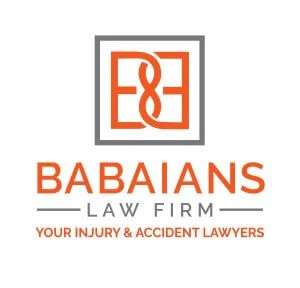
California’s pure comparative negligence law allows multiple parties to be held responsible for an accident, with damages allocated accordingly. In Shared Fault Motorcycle Accidents, being found partially at fault can reduce your compensation by the percentage of fault attributed to you.
However, determining this percentage can be challenging. We can help you understand how fault is assessed and what steps you can take to minimize the reduction of damages and maximize your recovery. To learn more, schedule a free consultation today with a Glendale motorcycle accident lawyer.
Understanding Comparative Negligence in California
In California courts, the pure comparative negligence system is used to determine the percentage of fault attributed to each party. This percentage is then used to calculate the amount of injury compensation you’re entitled to receive.
For instance, if you’re found to be 20% at fault for the accident, you can still recover 80% of the damages from the other party.
It’s vital to understand that California’s comparative negligence system is not a fixed formula, and the court’s decision will depend on the specific circumstances of your case. The court will consider various factors, including:
- The severity of the accident
- The extent of your injuries
- Level of negligence exhibited by each party
To help ensure you receive fair injury compensation, it’s vital to work with a Glendale personal injury lawyer who is well-versed in California’s comparative negligence laws. We will help you maneuver the intricacies of the system and advocate on your behalf to help ensure you receive the maximum amount of damages you’re entitled to.
By understanding how comparative negligence works in California, you can better maneuver the legal process and achieve a more favorable outcome.
For a free legal consultation, call (818) 334-2981
How Shared Fault Motorcycle Accidents Affects Damages
When you’re involved in a motorcycle accident and shared fault is determined, you’ll want to understand how it affects the damages you can recover. This is when comparative negligence laws come into play, allowing the court to apportion fault percentages to each party involved.
Apportioning Fault Percentages
In California, the court will apportion fault percentages to each party involved in the motorcycle accident. This means that you, as the plaintiff, will need to demonstrate the defendant’s level of negligence and prove that your actions did not substantially contribute to the accident.
To achieve this, you’ll need to gather and present solid evidence, including witness statements, accident reconstruction reports, and medical records. Your primary goal is to show that the defendant’s actions were the primary cause of the accident, thereby minimizing your fault percentage.
From an insurance implications perspective, the at-fault party’s insurance company will be liable for damages, so it is crucial to determine fault percentages accurately. As the plaintiff, your motivations are to maximize your damage award, and by presenting a strong case, you can receive the compensation you are entitled to.
Reduced Damage Awards
Shared fault in a motorcycle accident case can greatly impact the amount of damages you’re entitled to recover. California’s comparative negligence law allows the court to reduce your damage award in proportion to your percentage of fault.
Here are 4 ways shared fault can impact your damage award:
- Reduced economic damages: Your award for medical expenses, lost wages, and other economic losses will be reduced in proportion to your percentage of fault.
- Lower non-economic damages: Your award for pain and suffering, emotional distress, and other non-economic losses will also be reduced.
- Defense strategies: The defense may use shared fault to argue that you were contributorily negligent and that your award should be reduced or even eliminated.
- Case impact: Shared fault can impact your entire case, potentially affecting not only your damage award but also the likelihood of a favorable settlement or verdict.
Strategies for Proving Fault
To prove culpability in a motorcycle accident case, it is vital to employ effective tactics that demonstrate the defendant’s negligence or recklessness, and a skilled attorney will often use a combination of evidence and witness testimony to build a compelling case:
- Gathering and examining evidence: Your attorney will collect and review all relevant evidence, including police reports, witness statements, and medical records, to build a strong case against the defendant.
- Witness testimony: Your attorney may hire experts, such as accident reconstruction specialists or medical professionals, to provide testimony that supports your case and helps to establish the defendant’s liability.
- Negotiation tactics: Your attorney will use negotiation tactics to try to settle with the defendant’s insurance company, which can help to avoid a lengthy and costly trial.
- Settlement strategies: If a settlement is not possible, your Glendale motorcycle accident attorney will develop a settlement strategy that takes into account the strengths and weaknesses of your case, as well as the potential risks and rewards of going to trial.
Click to contact our personal injury lawyers today
Get a Free Consultation With Our Shared Fault Motorcycle Accidents Today
At Babaians Law Firm, we understand that shared fault can significantly impact your motorcycle accident case in Glendale. Our attorneys are experienced in handling shared fault cases and will work diligently to gather evidence, present witness testimony, and minimize the reduction of damages.
By understanding California’s pure comparative negligence law, you’ll be better equipped to maximize your recovery. We will help you present a strong case to ensure you receive the damages you deserve. Please contact us today for a free consultation.


